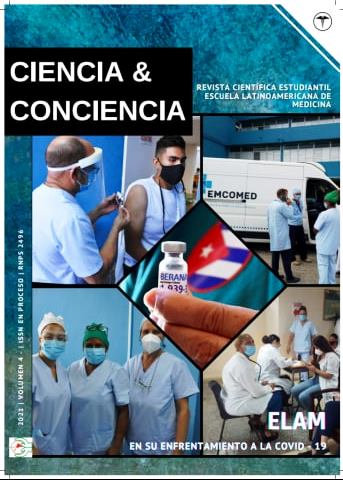Esquistosomiasis en Ghana, África / Schistosomiasis in Ghana, Africa
Palabras clave:
Esquistosomiasis, ciclo de vida, forma infectante, crónica, Praziquantel, miracidio / Schistosomiasis, life cycle, infective form, cronic, miracidiumResumen
La esquistosomiasis, una enfermedad tropical desatendida de la pobreza, ocupa el segundo lugar entre las enfermedades parasitarias más extendidas en varias naciones del África. Las enfermedades tropicales desatendidas son la causa de aproximadamente 534.000 muertes anuales en el África y se estima que anualmente se pierden 57 millones de años de vida ajustados por discapacidad debido a las enfermedades tropicales desatendidas. Las enfermedades tropicales desatendidas ejercen una gran carga sanitaria, social y financiera en las economías de los hogares y los gobiernos. La esquistosomiasis tiene profundos efectos negativos en el desarrollo infantil, el resultado del embarazo y la productividad agrícola, por lo que es una razón clave por la que los habitantes de los “500 millones más pobres” del África subsahariana continúan viviendo en la pobreza. En 2008, 17,5 millones de personas fueron tratadas en todo el mundo por esquistosomiasis, de las cuales 11,7 millones procedían de África subsahariana. Esta enfermedad enervante ha sido erradicada con éxito en Japón, así como en Túnez. Marruecos y algunos países insulares del Caribe han logrado avances significativos en el control y manejo de esta enfermedad. Brasil, China y Egipto están dando pasos hacia la eliminación de la enfermedad, mientras que la mayoría de los países subsaharianos como Ghana todavía se lamentan bajo la carga de la enfermedad. Varios factores son responsables de la transmisión continua y persistente de la esquistosomiasis en el África subsahariana. Estos incluyen los cambios climáticos y el calentamiento global, la proximidad a los cuerpos de agua, el riego y la construcción de presas, así como factores socioeconómicos como las actividades ocupacionales y la pobreza. No se puede dejar de enfatizar la morbilidad y la mortalidad causadas por esta enfermedad. Esta revisión es una exposición de la esquistosomiasis humana que afecta a los habitantes de varias comunidades en los países africanos particularmente Ghana. Se espera que esto traiga un nuevo despertar hacia los esfuerzos para combatir esta enfermedad empobrecedora en términos de desarrollo de vacunas, diseño de fármacos alternativos, así como nuevos diagnósticos en el punto de atención. ABSTRACT Schistosomiasis, a neglected tropical disease of poverty ranks second among the most widespread parasitic disease in various nations in sub-Saharan Africa. Neglected tropical diseases are causes of about 534,000 deaths annually in sub-Saharan Africa and an estimated 57 million disability-adjusted life-years are lost annually due to the Neglected tropical diseases. The Neglected tropical diseases exert great health, social and financial burden on economies of households and governments. Schistosomiasis has profound negative effects on child development, outcome of pregnancy, and agricultural productivity, thus a key reason why the “bottom 500 million” inhabitants of sub-Saharan Africa continue to live in poverty. In 2008, 17.5 million people were treated globally for schistosomiasis, 11.7 million of those treated were from sub-Saharan Africa. This enervating disease has been successfully eradicated in Japan, as well as in Tunisia. Morocco and some Caribbean Island countries have made significant progress on control and management of this disease. Brazil, China and Egypt are taking steps towards elimination of the disease, while most sub-Saharan countries are still groaning under the burden of the disease. Various factors are responsible for the continuous and persistent transmission of schistosomiasis in sub-Saharan Africa. These include climatic changes and global warming, proximity to water bodies, irrigation and dam construction as well as socio-economic factors such as occupational activities and poverty. The morbidity and mortality caused by this disease cannot be overemphasized. This review is an exposition of human schistosomiasis as it affects the inhabitants of various communities in sub-Sahara African countries. It is hoped this will bring a re-awakening towards efforts to combat this impoverishing disease in terms of vaccines development, alternative drug design, as well as new point-of-care diagnostics.Descargas
Publicado
2021-10-15
Cómo citar
1.
Rashid S- an, Domenech Cañete I, Valdes Hernández MJ. Esquistosomiasis en Ghana, África / Schistosomiasis in Ghana, Africa. RNPS 2492 [Internet]. 15 de octubre de 2021 [citado 26 de diciembre de 2025];4(1). Disponible en: https://revcienciaconciencia.sld.cu/index.php/ciencia-conciencia/article/view/43
Número
Sección
Articulos de Revisión



